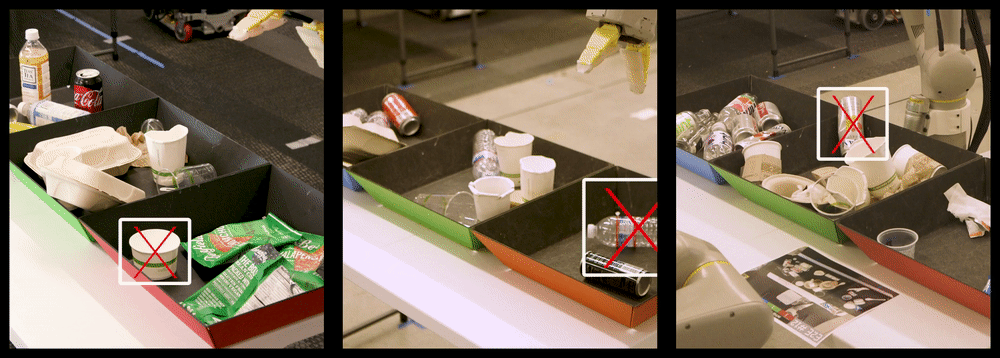
Idea hatchers at the Moonshot Factory, Alphabet X, have been busy on an Everyday Robot project and its goal is quite simple. They are keen on "building a robot that can learn to operate in many different situations."
Somewhere between the headlines over superstar robots from Boston Dynamics that do back-flips and leap across planks and the bottom layer of cute martian robots that smile and blink is that middle layer of everyday robots that can help people in everyday situations—at least that middle layer has become the project focus.
The interesting feature about this project is not just figuring out how to make the robots but rather how to make robots that can learn— in a move away from "painstakingly coding them to do specific and structured tasks."
So far there has been ample proof elsewhere that robots are taught to learn, but the project team is interested in robots that are agile learners, that, once kitted out with cameras and machine learning software, can observe the messy, unpredictable world around them without, as The Download newsletter, MIT Technology Review, put it, "being taught every potential situation they may encounter."
The team's efforts in working toward everyday robots have been paying off in confirming what they hoped would be the case—by giving robots simple tasks and then having them practice, it is possible to teach them to develop new and better capabilities.
"Most robots are where mainframe computers were in the '60s and '70s," said Hans Peter Brondmo, who carries a title of Chief Robot Whisperer, the Everyday Robot Project, X, and that would be "expensive specialist machines, operated by experts, performing specialized tasks in specially-designed environments."
Consider that a robot purposed for assembly line restricted tasks has been coded and engineered to operate in a very structured environment. What about the robot that meets an unexpected obstruction?
"In order for robots to be useful day to day, they need to understand and make sense of the spaces where we live and work...This requires new forms of machine intelligence."

The project members chose to involve different kinds of teachers. They are (1) other robots (2) humans and (3) cloud simulations. It was pointed out that the student robots learn fast through high-fidelity simulations.
"We investigated how robots can learn from human demonstration, from shared experience, and how we can accelerate learning by simulating robots in the cloud. Once we saw what was possible, we began plotting our path out of the lab," said Brondmo.
How are they doing?
So far, the robots show they are learning. The robots have been learning how to sort trash. Testing is going on in Alphabet locations in California. This is a learning exercise. Just like humans, they are required to choose which trash items go into which receptacles for landfill, recycling, or compost. (Jay Peters in The Verge showed a GIF of a robot sorting a recyclable can from a compost pile to a recycling pile. "This is wild—check out how the arm actually grasps the can," he said.)
The team revealed its training approach: "Each night, tens of thousands of virtual robots practice sorting the waste in a virtual office in our cloud simulator; we then move the training to real robots to refine their sorting ability. This real-world training is then integrated back into the simulated training data and shared back with the rest of the robots so that the experience and learning of each robot is shared with them all."
Just as the robots are learning, the project participants are getting important messages too. The team is looking at the success of robots figuring out how to sort trash and the team said that "they prove that it's possible for robots to learn how to perform new tasks in the real world just through practice, rather than having engineers 'hand code' every new task, exception, or improvement."
The project site said that "The robots are learning how to navigate and assist in workplace environments shared with people. They're doing things like sorting recycling (pretty slowly for now). The initial results are encouraging and the team continues to research, experiment, and learn in order to get robots to a place where they can help everyone, everyday."
The Download: "For now: The early prototype robots are learning how to sort trash. It sounds mundane, but it's tough to get robots to identify different types of objects." The newsletter had no need to apologize that sorting seemed mundane. Neither is it mundane for everyday humans. Old lampshade there; plastic bottles here; empty shampoo bottles, hmm, used gift wrappings, cookie cannisters, rinsed fish tins, well, give us a minute.
Back to the project's report card: This is the trash-sorting robots' success by the numbers: During the last few months, wrote Brondmo, robots have sorted thousands of pieces of trash and reduced their office's waste contamination levels from 20 percent—what it is when people put objects in the trays—to less than 5 percent.
Explore further
© 2019 Science X Network
Citation: A Moonshot robot is earning marks for sorting trash (2019, December 2) retrieved 2 December 2019 from https://ift.tt/2r4FRQX
This document is subject to copyright. Apart from any fair dealing for the purpose of private study or research, no part may be reproduced without the written permission. The content is provided for information purposes only.
"Trash" - Google News
December 02, 2019 at 06:00PM
https://ift.tt/2r4FRQX
A Moonshot robot is earning marks for sorting trash - Tech Xplore
"Trash" - Google News
https://ift.tt/33Uwgu2
Shoes Man Tutorial
Pos News Update
Meme Update
Korean Entertainment News
Japan News Update
Bagikan Berita Ini














0 Response to "A Moonshot robot is earning marks for sorting trash - Tech Xplore"
Post a Comment